Exploring the Sensuality of “The Kiss” by Auguste Rodin
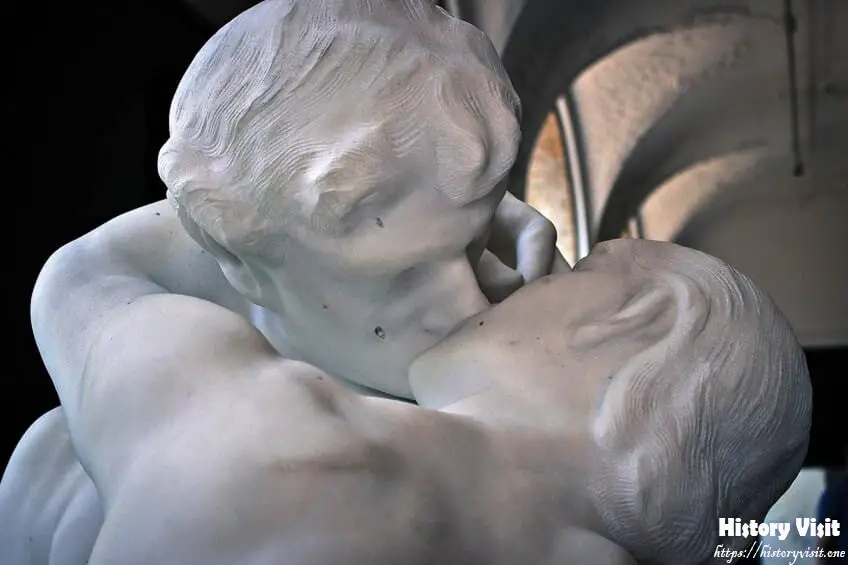
Introduction
“The Kiss” by Auguste Rodin stands as a timeless testament to the power of art to capture the essence of human emotion and passion. Crafted between 1882 and 1889, this iconic sculpture has captivated audiences worldwide with its evocative portrayal of love and intimacy. Situated prominently in the Musée Rodin in Paris, France, the original masterpiece continues to enchant visitors, offering a glimpse into the artist’s profound exploration of sensuality and desire.
Rodin, a visionary sculptor of the late 19th century, challenged traditional artistic conventions with his innovative approach to form and expression. “The Kiss” exemplifies his mastery of capturing raw emotion in stone, embodying the complexities of human relationships with striking realism. As we delve into the story behind this celebrated artwork, we uncover layers of symbolism and interpretation that speak to universal truths about love, passion, and connection.
In this article, we embark on a journey to unravel the mysteries of “The Kiss” by Auguste Rodin. From the artist’s inspirations and creative process to the cultural significance of the sculpture, we explore the enduring allure of this masterpiece and its impact on the world of art.
The Artist: Auguste Rodin
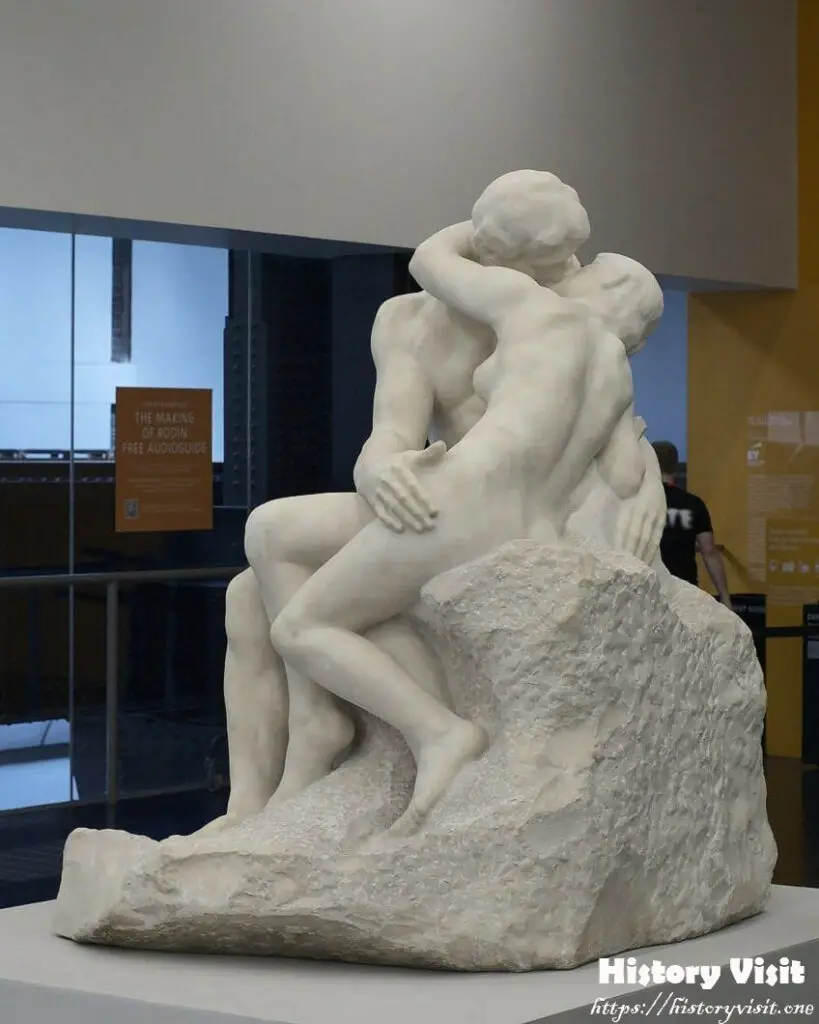
Auguste Rodin, born in Paris in 1840, emerged as one of the most influential sculptors of his time, revolutionizing the medium with his innovative techniques and bold vision. Inspired by the works of Michelangelo and the expressive power of the human form, Rodin sought to capture the essence of life in his sculptures, transcending mere physical likeness to convey profound emotional depth.
Rodin’s artistic philosophy centered on the idea that art should evoke an immediate emotional response from the viewer. Rejecting the rigid academic standards of his day, he embraced a more fluid and dynamic approach to sculpting, allowing his creations to emerge organically from the material itself. This unconventional method earned him both praise and criticism but ultimately cemented his reputation as a pioneer of modern sculpture.
Throughout his career, Rodin remained committed to exploring the complexities of human experience, delving into themes of love, passion, and suffering with unparalleled sensitivity and insight. His works, including “The Thinker” and “The Gates of Hell,” reflect a deep engagement with the human condition, inviting viewers to contemplate the universal truths that bind us all.
The Creation of “The Kiss”

“The Kiss” was conceived by Rodin as part of his monumental masterpiece, “The Gates of Hell,” commissioned in 1880 for a proposed museum of decorative arts in Paris. Originally intended as a depiction of Dante’s Inferno, the sculpture evolved into a standalone work, inspired by the tragic love story of Paolo and Francesca from Dante’s “Divine Comedy.”
Rodin’s portrayal of the lovers locked in a passionate embrace captures the intensity of their forbidden love, frozen in time for eternity. The sculpture underwent several iterations before reaching its final form, with Rodin experimenting with different poses and compositions to convey the desired emotional resonance. The result is a masterpiece of sensual beauty, imbued with a sense of longing and desire that transcends its narrative origins.
Multiple casts of “The Kiss” were produced during Rodin’s lifetime, allowing the sculpture to reach a wider audience and cementing its status as one of his most iconic works. Today, the original resides in the Musée Rodin in Paris, where it continues to inspire awe and admiration among visitors from around the world. Through its timeless portrayal of love and passion, “The Kiss” remains a testament to Rodin’s enduring legacy as one of the greatest sculptors of all time.
Symbolism and Interpretations
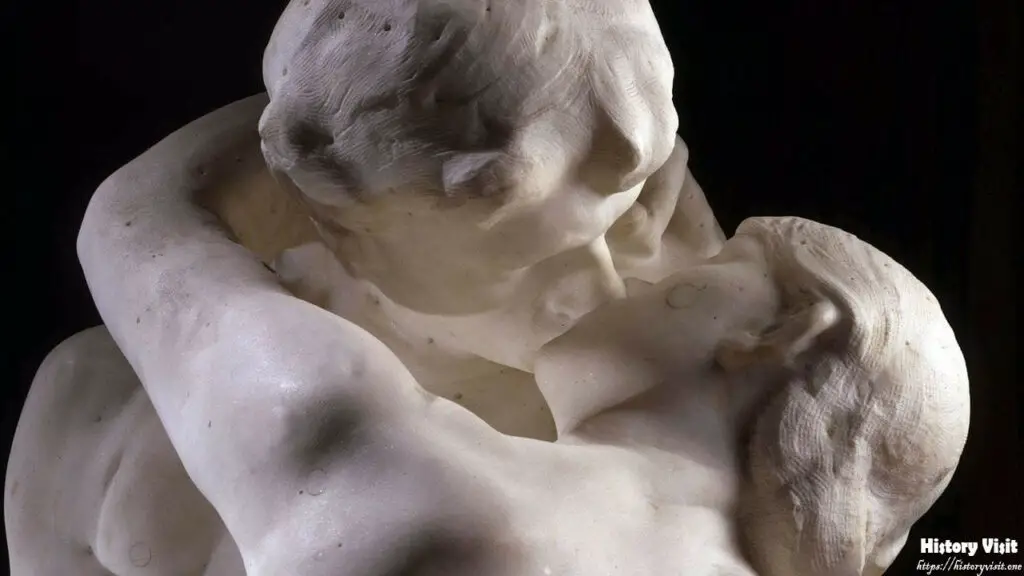
“The Kiss” by Auguste Rodin has been the subject of numerous interpretations, with scholars and art enthusiasts alike offering their own insights into its meaning and symbolism. At its core, the sculpture explores themes of love, passion, and intimacy, inviting viewers to contemplate the complexities of human relationships and the universal desire for connection.
The intertwined figures of Paolo and Francesca symbolize the intensity of their forbidden love, transcending the boundaries of time and space. Rodin’s use of form and composition enhances the sense of movement and emotion, capturing the moment of their embrace with remarkable realism and sensitivity.
Beyond its narrative origins, “The Kiss” has been interpreted as a meditation on the nature of desire and longing, reflecting the human impulse to seek connection and intimacy amidst the chaos of existence. The sculpture’s universal appeal lies in its ability to evoke a visceral emotional response from viewers, tapping into the depths of our shared humanity.
As we gaze upon “The Kiss,” we are reminded of the timeless power of art to transcend language and culture, speaking to the universal truths that unite us all. Through its exquisite craftsmanship and profound emotional resonance, Rodin’s masterpiece continues to captivate and inspire, inviting us to contemplate the enduring mysteries of love and desire.
Reception and Legacy
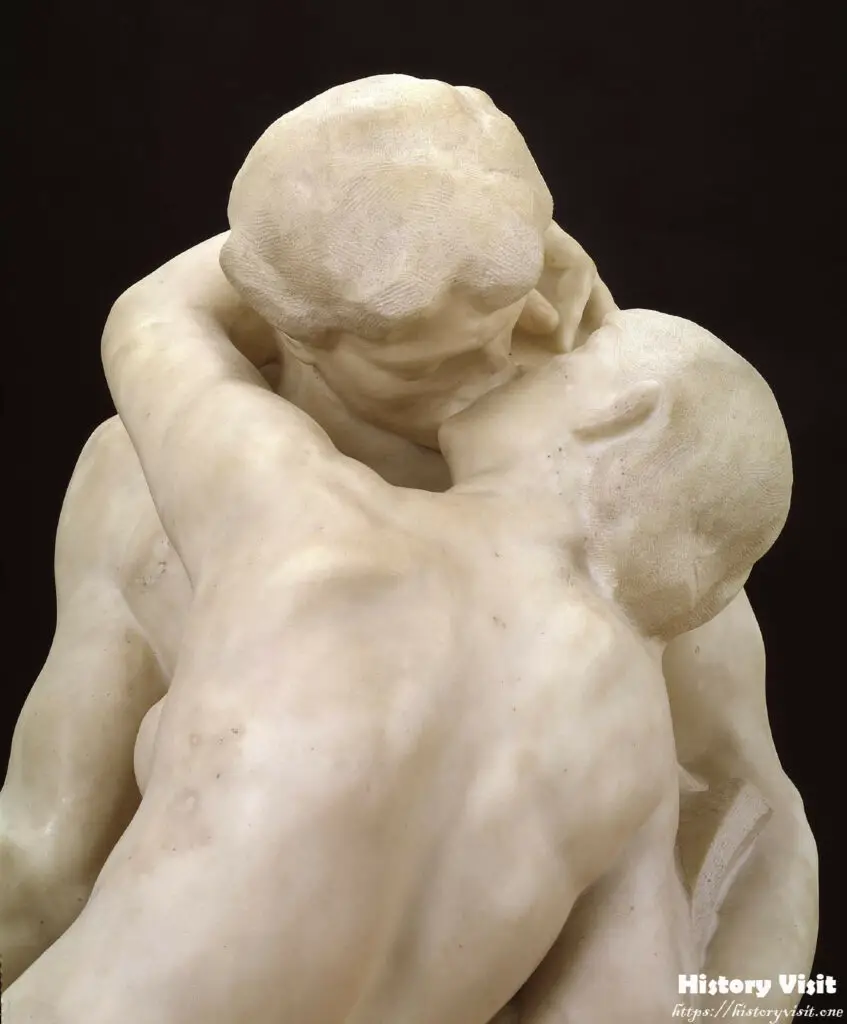
Upon its completion, “The Kiss” elicited a range of reactions from critics and audiences alike, with some praising its sensual beauty and emotional depth, while others criticized its departure from traditional artistic conventions. Despite the initial controversy, the sculpture soon garnered widespread acclaim, cementing Rodin’s reputation as a visionary artist of unparalleled talent.
“The Kiss” has since become one of Rodin’s most celebrated works, inspiring countless artists and scholars with its evocative portrayal of love and passion. Its influence can be seen in the work of subsequent generations of sculptors, who have sought to emulate Rodin’s mastery of form and expression.
Today, “The Kiss” remains an enduring symbol of love and desire, captivating audiences with its timeless beauty and emotional resonance. Whether viewed in person at the Musée Rodin or admired from afar in books and reproductions, Rodin’s masterpiece continues to leave an indelible mark on the world of art, reminding us of the profound power of human connection.
The Original and Its Context
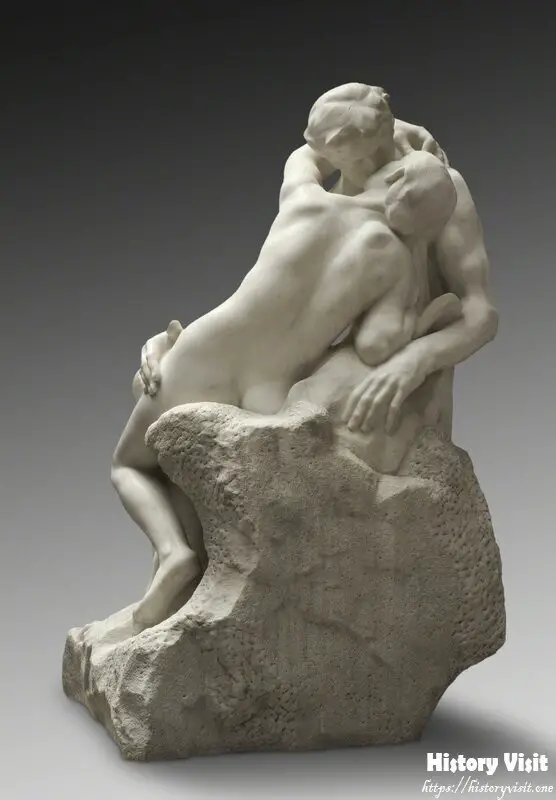
The original cast of “The Kiss” resides in the Musée Rodin in Paris, where it occupies a place of honor among the artist’s other masterpieces. Situated within the tranquil surroundings of the museum’s gardens, the sculpture invites visitors to contemplate its beauty amidst the lush greenery and serene atmosphere.
The setting of the Musée Rodin provides a fitting backdrop for “The Kiss,” allowing viewers to experience the sculpture in the context of Rodin’s larger body of work. Surrounded by his other iconic creations, including “The Thinker” and “The Burghers of Calais,” “The Kiss” takes on new meaning, inviting comparisons and contrasts that enrich our understanding of Rodin’s artistic vision.
Conservation efforts are ongoing to ensure the preservation of “The Kiss” for future generations, with experts working tirelessly to protect the sculpture from the ravages of time and environmental damage. Through careful maintenance and restoration, the Musée Rodin continues to honor Rodin’s legacy, ensuring that his masterpieces endure as a testament to the enduring power of art.
Conclusion

In conclusion, “The Kiss” by Auguste Rodin transcends its time and space to become a timeless emblem of human emotion and connection. Through its intricate craftsmanship and profound narrative, the sculpture invites us into a world of passion and intimacy, where the boundaries between art and reality blur. Rodin’s masterful portrayal of love and desire continues to captivate audiences worldwide, reminding us of the enduring power of art to evoke deep and visceral emotions.
As we reflect on the legacy of “The Kiss,” we are reminded of Rodin’s remarkable ability to capture the essence of the human experience with unparalleled sensitivity and insight. Through his innovative techniques and bold vision, he challenged the conventions of his time, leaving an indelible mark on the world of art that continues to resonate to this day. “The Kiss” serves as a testament to his enduring legacy, inspiring generations of artists and scholars with its timeless beauty and emotional resonance.
Whether viewed in the tranquil surroundings of the Musée Rodin or admired from afar in books and reproductions, “The Kiss” remains a poignant reminder of the universal truths that unite us all. From the depths of passion and desire to the complexities of human relationships, Rodin’s masterpiece invites us to contemplate the mysteries of love and connection, reminding us of the profound power of art to transcend language and culture. As we gaze upon “The Kiss,” we are reminded of our shared humanity and the enduring legacy of one of the greatest sculptors of all time.


